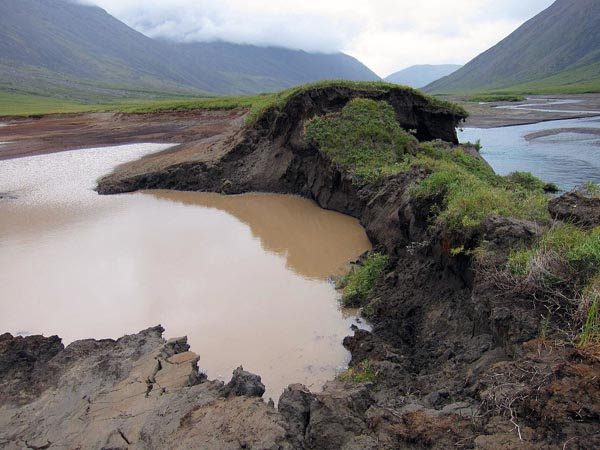Arctic Report Card documents a changing environment
December 13, 2016
Jeff Richardson
907-474-6284

University of Alaska Fairbanks scientists are presenting their work at the American Geophysical Union’s fall meeting in San Francisco this week. Here are some highlights of their research, as shared at the world’s largest Earth and space science meeting.
NOAA released its 11th Arctic Report Card at the AGU fall meeting on Tuesday, warning that “unprecedented” warming is contributing to numerous changes in the region.
Five University of Alaska Fairbanks researchers are among the 61 contributors to the report. They include Atmospheric Sciences Professor Uma Bhatt, Vice Chancellor for Research Larry Hinzman, Institute of Arctic Biology Researcher Martha Raynolds, IAB Professor Donald “Skip” Walker and International Arctic Research Center Chief Scientist John Walsh.
Hinzman co-authored a chapter in the report about the importance of viewing the warming Arctic as an interconnected system, rather than a series of individual changes. That integrated environment is one of the themes of the report.
The report’s findings highlight many signs of a changing Arctic:
- The average annual air temperature over land in the Arctic had the highest annual increase since 1900, climbing 6.3 degrees Fahrenheit. That’s double the rate of the global temperature rise.
- Spring snow cover in the Arctic set a record low since satellite observations began in 1967.
- Arctic sea ice minimums from mid-October to late November 2016 were the lowest since satellite records began in 1979.
- As more carbon dioxide is released into the atmosphere, ocean acidification in the Arctic is expected to intensify. That will place more stress on marine fisheries, particularly organisms that need calcium carbonate to build shells.
- Warming temperatures in the Arctic are resulting in both thawing permafrost, which releases greenhouse gases, and increased growth of carbon-dioxide absorbing plants. Overall, the Arctic is seeing a net release of atmospheric carbon.
- The changes will result in “a global suite of trillion-dollar impacts,” including global trade, changing ecosystems, damage to infrastructure and national security concerns, according to the report.
Hinzman said the contents of the report aren’t surprising. Each subsequent NOAA report has showed an advancing trend toward a warmer Arctic, he said.
“We’ve been on a single trajectory — the temperatures are warming, sea ice is declining, permafrost is thawing,” Hinzman said. “That’s been the theme, year after year after year.”
The full report is available at www.arctic.noaa.gov/Report-Card.


